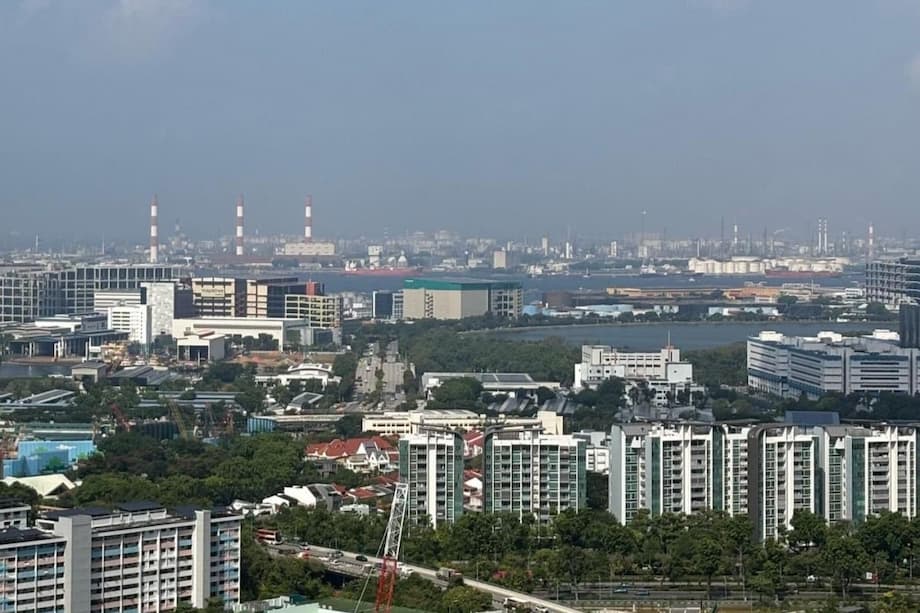Singapore’s Million-Dollar HDB Flats: A New Era for Public Housing
In Singapore, a city renowned for its high homeownership rates and carefully managed public housing system, the rise of million-dollar HDB (Housing & Development Board) flats has become one of the most talked-about trends in recent years. What was once considered a rare anomaly is now a regular feature in property headlines, with record-breaking transactions and new market dynamics reshaping the landscape of public housing. This article explores the factors driving this phenomenon, the implications for homeowners and buyers, and what it means for the future of affordable housing in Singapore.
- Singapore’s Million-Dollar HDB Flats: A New Era for Public Housing
- How Did Million-Dollar HDB Flats Become So Common?
- Who’s Buying Million-Dollar HDB Flats—and Why?
- How Widespread Is the Trend?
- What’s Fueling the Price Surge?
- Concerns About Affordability and Speculation
- Are “Normal” HDB Flats Still Affordable?
- What’s Next for Singapore’s HDB Market?
- In Summary
How Did Million-Dollar HDB Flats Become So Common?
For decades, HDB flats have been the backbone of Singapore’s housing policy, providing affordable homes for over 77% of residents. Traditionally, these flats were seen as a stepping stone for Singaporeans, offering subsidized prices and strict eligibility criteria. However, the past decade has witnessed a dramatic shift. The first million-dollar HDB flat was sold in 2012—a rare executive apartment in Queenstown. Fast forward to 2024, and over 1,000 HDB flats have crossed the million-dollar mark in a single year, more than double the previous year’s record.
This surge is not limited to a handful of special units. While unique layouts like executive flats, maisonettes, and DBSS (Design, Build and Sell Scheme) units often command premium prices, a growing number of standard 4-room and 5-room flats in mature estates are now fetching seven-figure sums. In fact, nearly every HDB town—except for Choa Chu Kang, Jurong West, Sembawang, and Tengah—has recorded at least one million-dollar transaction, with Sengkang joining the list in 2024.
Key Drivers Behind the Trend
Several factors have converged to fuel the rise of million-dollar HDB flats:
- Location, Location, Location: Flats in central or mature estates like Bukit Timah, Bishan, Toa Payoh, Bukit Merah, and Queenstown are highly sought after for their proximity to MRT stations, schools, amenities, and the city center.
- Scarcity and Supply Constraints: Construction delays during the COVID-19 pandemic, coupled with fewer new Build-To-Order (BTO) launches in prime areas, have tightened supply and pushed more buyers into the resale market.
- Changing Buyer Preferences: The shift to remote work and a desire for larger living spaces have increased demand for 4-room, 5-room, and executive flats, especially those with flexible layouts and privacy.
- Rising Private Property Prices: As private condos become less affordable, some buyers—including private property downgraders—are willing to pay a premium for spacious, well-located HDB flats.
- Affluent and Upgrading Buyers: Robust wage growth and a strong job market have empowered upper-middle-income earners to enter the HDB resale market, often seeking to upgrade or downsize from private homes.
These factors have combined to create a perfect storm, driving up both the number and value of million-dollar HDB transactions.
Who’s Buying Million-Dollar HDB Flats—and Why?
Meet Alice, a 29-year-old public servant, and her fiancé. In 2023, they purchased a three-bedroom, 883 sq ft flat on the 39th floor of a Clementi HDB block for S$1.018 million. The flat’s panoramic sea view, proximity to the MRT, and closeness to Alice’s parents made the price tag worth it for them. Their story is increasingly common among young professionals and families who prioritize location, convenience, and quality of life over traditional notions of affordability.
According to data from property agencies and government sources, the typical million-dollar HDB buyer falls into one of several categories:
- Young couples and families seeking larger flats in mature estates with good schools and amenities.
- Upgraders moving from smaller flats or private properties, often looking for more space or a better location.
- Private property downgraders who sell their condos or landed homes and buy HDB flats to unlock cash while maintaining a comfortable lifestyle.
For many, the decision is driven by practical considerations. As one recent buyer told Reuters,
“The monthly mortgage for my HDB flat is about S$3,400, this is much cheaper as the rental for a similar flat now will be about S$5,000.”
The relative affordability of HDB mortgages, especially with government loans, makes these high-value flats attractive even as prices soar.
What Types of Flats Are Fetching a Million Dollars?
While executive and 5-room flats dominate the million-dollar club, a significant number of 4-room units—especially those in prime locations or on high floors—are also crossing the threshold. In 2024, four-room flats accounted for 44% of million-dollar transactions, with five-room and executive flats making up the rest. The most expensive resale flat to date was a five-room unit at Skyoasis @ Dawson, sold for S$1.73 million.
Key characteristics of million-dollar HDB flats include:
- High floor with panoramic views
- Long remaining lease (often over 90 years)
- Proximity to MRT stations, schools, and amenities
- Located in mature or central estates
- Spacious layouts (often over 100 sq m)
How Widespread Is the Trend?
In 2024, an estimated 1,035 HDB flats were sold for at least S$1 million, making up about 3.7% of all resale transactions. This is a sharp increase from 470 such deals in 2023 and just 369 in 2022. The trend is accelerating: in February 2025 alone, a record 121 million-dollar flats changed hands, accounting for nearly 6% of all resale sales that month.
The phenomenon is no longer confined to a few select towns. In 2024, 23 out of 26 HDB towns recorded at least one million-dollar transaction, with mature estates like Kallang Whampoa, Toa Payoh, Bukit Merah, and Queenstown leading the pack. Even non-mature estates like Tampines and Sengkang have joined the ranks, reflecting the broadening appeal and normalization of high-value HDB sales.
Are Million-Dollar HDB Flats the New Normal?
While million-dollar transactions still represent a small fraction of the overall market, their rapid growth has prompted debate about whether they are becoming the new norm. Industry experts and analysts generally agree that while these flats are still outliers, their numbers will continue to rise, especially in desirable locations. As one property agent put it,
“Million-dollar HDB flats are here to stay, as there will always be people who like to live in central locations or larger spaces.”
In some districts, such as Bukit Timah, Central Area, and Bishan, million-dollar flats now make up a significant share of transactions—up to 38% in Bukit Timah. The trend is expected to persist, with forecasts suggesting up to 1,400 such deals in 2025 as demand remains strong and supply constraints continue.
What’s Fueling the Price Surge?
The broader HDB resale market has seen robust price growth, with resale prices rising 9.6% in 2024—almost double the increase recorded in 2023. Prices have climbed every quarter since mid-2020, driven by:
- Supply shortages due to construction delays and fewer new launches
- Strong demand from upgraders, young families, and private property downgraders
- Inflation and rising household incomes
- Government grants and favorable loan conditions for first-time buyers
However, the pace of price growth slowed in the last quarter of 2024, partly due to new government cooling measures and a major BTO launch that diverted some demand away from the resale market.
Government Response: Cooling Measures and Policy Changes
Concerned about affordability and the risk of speculation, the Singapore government has introduced several measures to temper the market:
- Reducing the loan-to-value (LTV) limit for HDB loans from 80% to 75% in August 2024, encouraging more prudent borrowing
- Enhancing the CPF Housing Grant for first-time buyers
- Implementing a new classification framework for BTO flats (Standard, Plus, Prime), with stricter resale conditions for flats in prime locations
These policies aim to balance the need for affordable housing with the realities of a dynamic and competitive property market. The government has also ramped up the supply of new flats, with over 21,000 launched in 2024 and more planned for 2025.
Concerns About Affordability and Speculation
The rise of million-dollar HDB flats has sparked debate about the long-term affordability of public housing. While HDB maintains that such transactions make up only a small percentage of the market and are typically limited to larger units in prime locations, public sentiment is mixed. Some Singaporeans worry that the trend could price out future generations or fuel speculative behavior.
Recent high-profile sales at estates like Bidadari’s Alkaff Vista have led to an influx of property agents and concerns about speculative flipping. Social media discussions often center on whether the Minimum Occupation Period (MOP) is effective in curbing speculation, and whether additional measures—such as income ceilings for resale buyers or government buybacks—should be considered.
HDB has responded by emphasizing that public housing remains affordable for the majority, and that the property market moves in cycles. The agency advises buyers to be financially prudent and not to overextend themselves, especially as mortgage rates and economic uncertainties persist.
Lease Decay: A Hidden Risk?
Another issue looming over the market is lease decay. All HDB flats are sold on 99-year leases, and as these leases shorten, the value of older flats may decline. While most million-dollar transactions involve newer flats with long leases, buyers of older units need to be mindful of the impact of lease decay on future resale value and financing options. Government schemes like SERS (Selective En bloc Redevelopment Scheme) and VERS (Voluntary Early Redevelopment Scheme) offer some relief, but only a small percentage of flats are eligible.
Are “Normal” HDB Flats Still Affordable?
Despite the headlines, the vast majority of HDB flats remain well below the million-dollar mark. The median resale price for HDB flats in February 2025 was S$630,000, and most transactions are in the S$400,000 to S$700,000 range. Analysis shows that even when excluding special flat types, prices for standard 3-room and 4-room flats have risen significantly—by 40 to 50 percent over the past nine years—but remain within reach for most Singaporeans, especially with government grants and prudent financial planning.
However, the rapid appreciation of both “normal” and special flats underscores the importance of continued policy vigilance and supply-side interventions to ensure that public housing remains accessible for future generations.
What’s Next for Singapore’s HDB Market?
Looking ahead, most analysts expect the trend of million-dollar HDB flats to persist, though the pace of growth may moderate as new supply comes online and economic headwinds emerge. The government’s new BTO classification system, stricter loan limits, and enhanced grants are likely to shape buyer behavior and market dynamics in the coming years.
Experts suggest that while million-dollar flats will remain a small fraction of total transactions, their numbers will continue to rise, especially in prime locations and for larger units. As one analyst noted,
“While million-dollar HDB flats are unlikely to become the norm for every flat, it is expected that every HDB town will have a few such flats, especially in desirable locations.”
Ultimately, the challenge for policymakers will be to balance the aspirations of homeowners with the need to maintain affordable, inclusive public housing for all Singaporeans.
In Summary
- Million-dollar HDB flats have become increasingly common, with over 1,000 transactions in 2024 alone.
- The trend is driven by location, supply constraints, changing buyer preferences, and rising private property prices.
- Most million-dollar flats are large units in mature or central estates, often with long leases and high floors.
- Government measures have been introduced to cool the market and maintain affordability, including stricter loan limits and new BTO classifications.
- Concerns about affordability, speculation, and lease decay persist, but the majority of HDB flats remain below the million-dollar mark.
- The trend is expected to continue, with million-dollar flats becoming a regular feature in Singapore’s public housing landscape, especially in prime locations.












